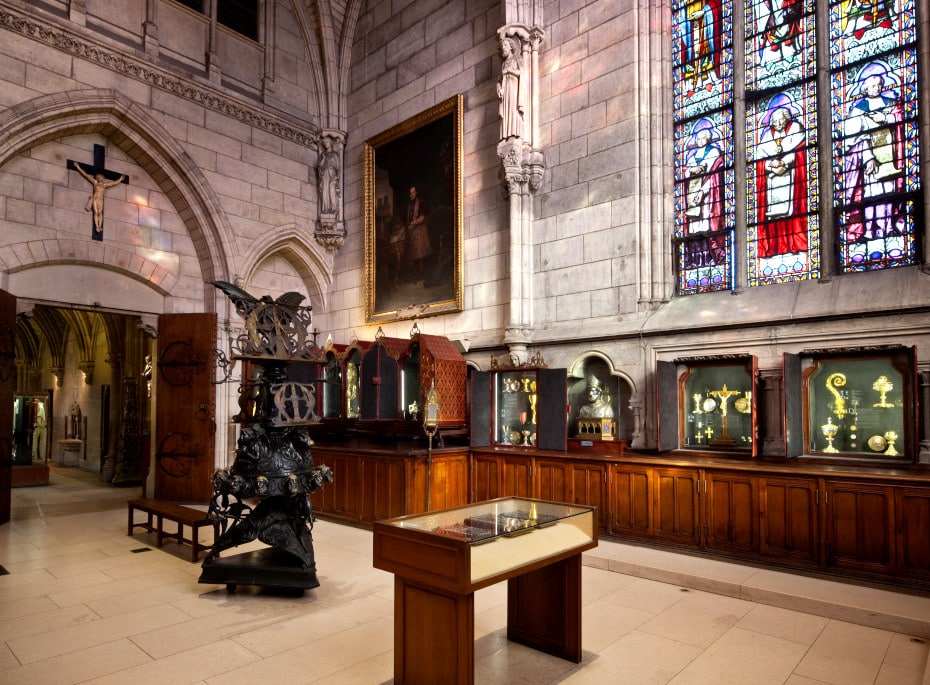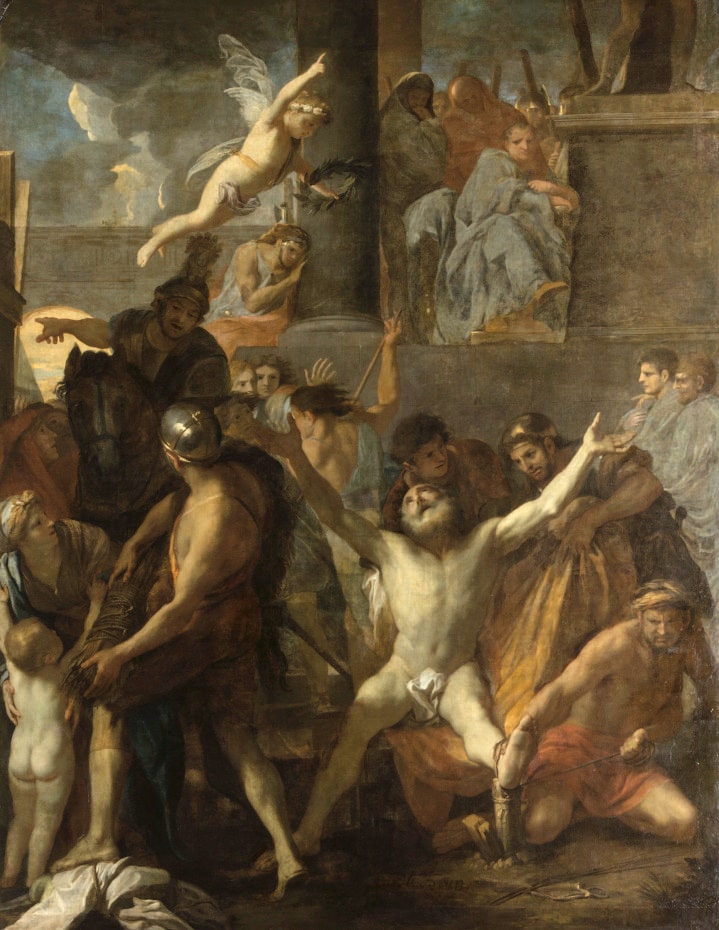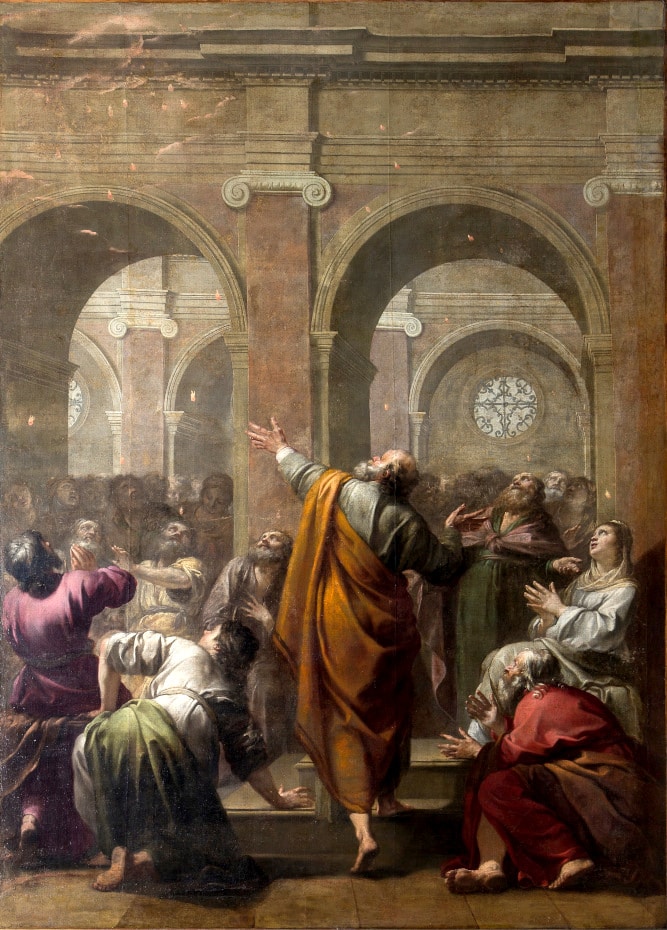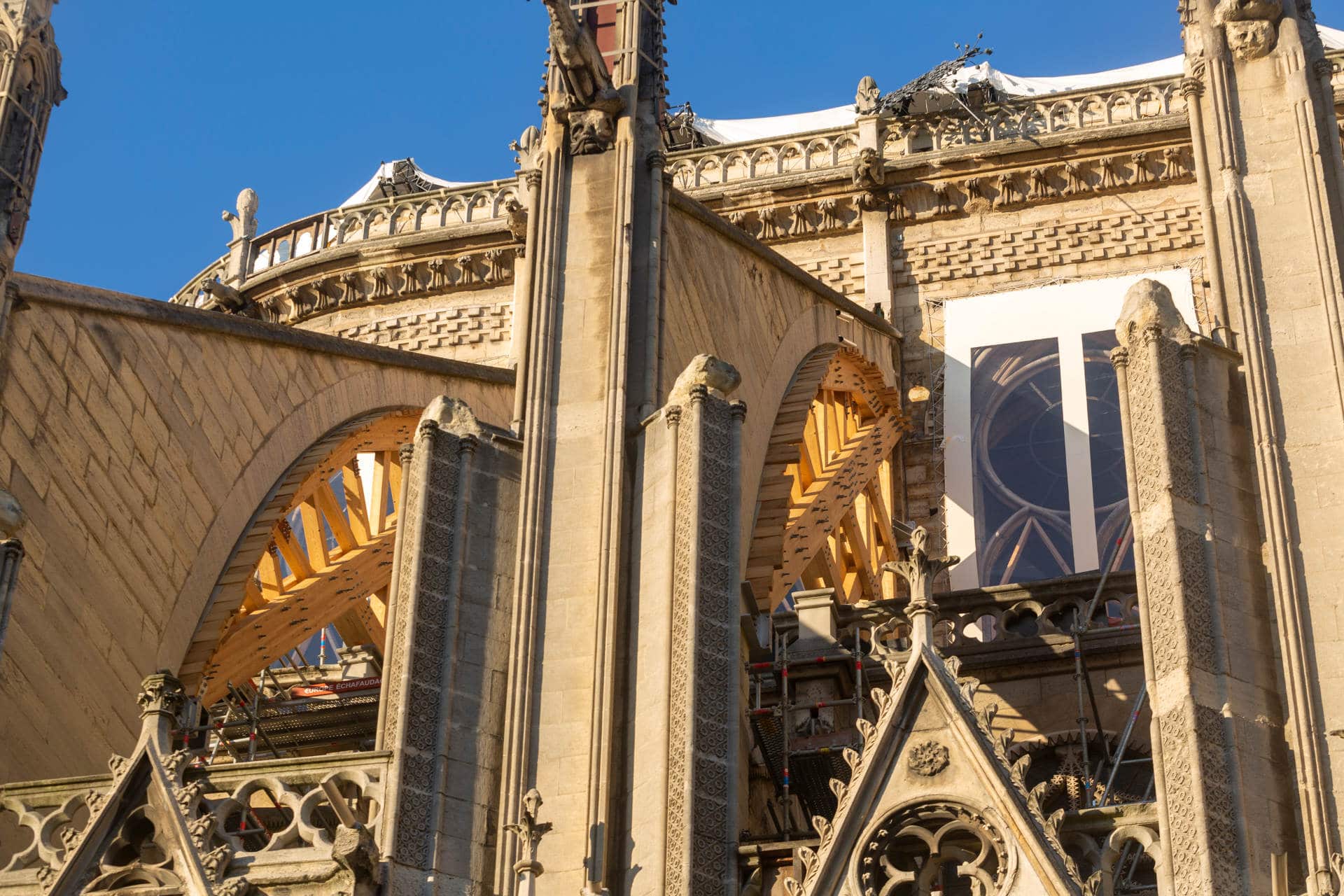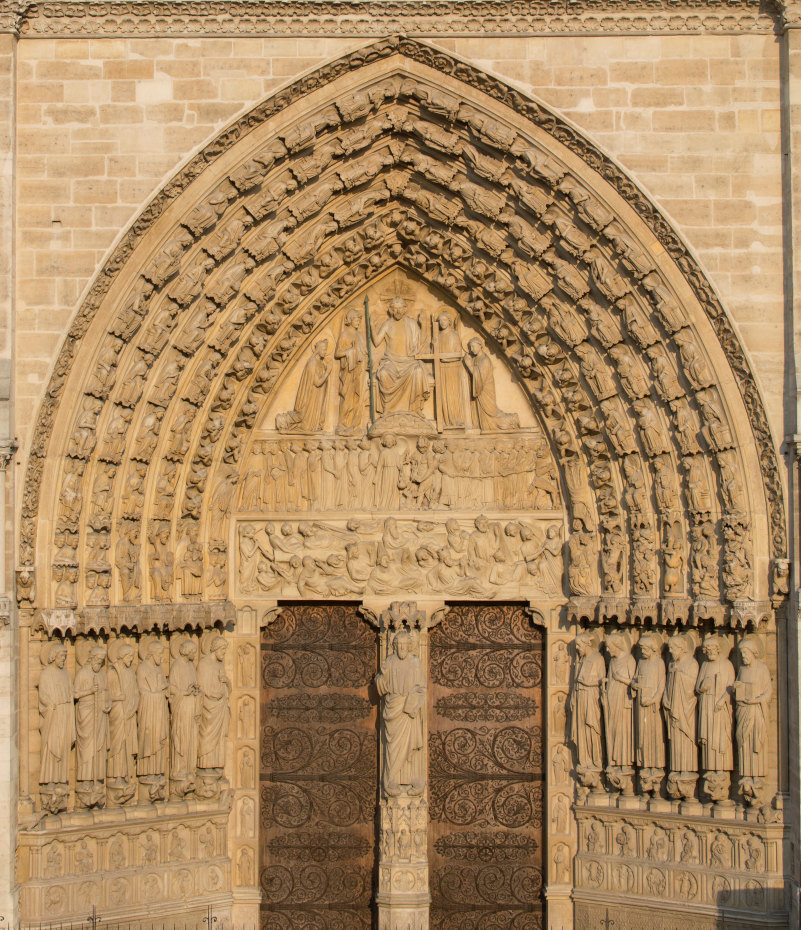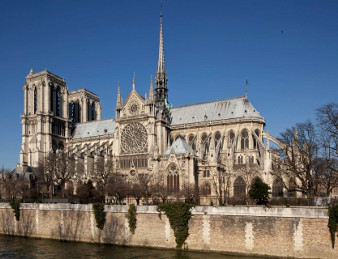The sacristy is the room reserved for clergy to prepare for a service. Objects used in worship are kept here, such as holy books, vestments, hosts, chalices, and censers. The sacristy adjoins the choir to allow clergy to move easily from preparing for to conducting a service.
Notre-Dame’s treasury houses religious objects and liturgical elements. At the end of the 18th century, it was one of the most valuable treasuries in Europe. It completely disappeared during the French Revolution. Elements were scattered, sometimes reused to create other objects of art or jewelry. The collection was reconstituted following the Concordat of 1801, thanks to donations from popes and sovereigns.
Ransacked once again during the riots of 1830, the treasury we see today was designed by Viollet-le-Duc in the middle of the 19th century. It houses a reliquary containing one of Christ’s nails, a thorn from the Crown of Thorns, a fragment of the True Cross and the linen shirt of Saint Louis. Also on display are precious manuscripts, monstrances, crosses, chalices and Napoleon’s coronation robes. Regularly enriched since the 19th century, the treasury’s presentation was revised in 2012.
